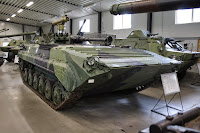This time of this year seemed a proper time to make a post about the Finnish army. On 27th of April we celebrated the veteran day (Kansallinen veteraanipäivä) remembering all the veterans of our wars. On that date in 1945 the last German troops retreated from Finland to Norway in Lapland and the Lapland War ended. Then on last Sunday, the 17th of May we had the Commemoration Day of Fallen Soldiers (Kaatuneiden muistopäivä) in rememberance of all those soldiers given their lives defending Finland or in peacekeeping duties of UN and on 4th of June we are celebrating the birthday of Marshal of Finland Carl Gustaf Emil Mannerheim, the day nowadays known as the Flag Day of Finnish Defence Forces (Puolustusvoimien lippujuhlapäivä).
We have a conscriptional army in Finland. It roots date back to Swedish regime’s days in medieval times. The king had the right to assign normal phesants to fight in his army. This was found not to produce a good and experienced army, so the base of conscriptional army was laid during the 17th century. Finally there was a system (ruotuväkilaitos) in which a group of houses were obliged to equip a soldier. The soldier was given a small house (torppa) in which to live and which to give him some income. A bigger house (rustholli) equipped a man and a horse to the king’s army and was given some tax reliefs. The officers lived also amoung the common people in houses (puustelli) given to them due to their service in the army. This system was demolished when Finland was attached to Russia. And the czar promised, that Finnish soldiers would never have to fight on foreign soil. Still the Swedish system worked somewhat in Finland during the Russian regime in 19th century.
In 1870 the Russian czar ordered a conscription to come in force in Russia. Finland got once again a seperate law for conscription army and this law came into force in 1878. The time of service was set to three years and about 10 % of the generation was ordered to service based on a lottery. At the turn of the century the Finnish army was ordered to become as part of the Russian army. This realised only partially as the Finns stroke against the new law.
After Finland gained its independency the situation with the army was for some years a bit uncertain. The law of conscriptional army was set in 1922. After that the Finnish army has been based on conscription. The actual base of the independent nation's army was created by the Jägers and their expertise (see post 06.12.2012).
The constitutional law of Finland says that every Finnish citizen is obliged to defend our country. The conscription is for men between their 18 to 60 years of age. There are at the moment about 1,5 million men in Finland who belong to these age groups. From 1995 onwards the Finnish women have also had the the right to voluntary do the military service. So far about 6 500 women have used their right.
The military service in Finland is 165, 255 or 347 days. The service is done in one or many of the garrisons around Finland. Usually the first two weeks after entering the service the soldiers are not allowed to leave the garrison. After that they get evening and weekend leaves of absence.
In Finland a man can also choose a military service without weapon, a civil service or a total denial from military or civil service. Almost 80 % of the men of the generation choose to do the military service, so about 21 000 men are annually doing their military service. The civil service takes 347 days and includes 1 month training and almost 11 months work service in some governmental etc. facility, f. ex. hospital. Some men choose (70-80 men annually) the total denial, which means 1 year in prison unless they are citizens of Åland or Jehova’s Witnesses who are exempt from military service.
More about the Finnish army can be found here.



